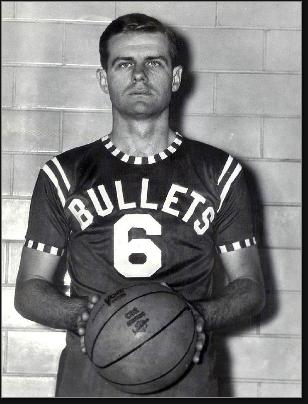
Sport: Basketball
Born: November 12, 1939
Town: Jersey City, New Jersey
George R. Blaney was born November 12, 1939 in Jersey City, NJ. A quick and clever basketball player who learned the game in the local playgrounds and youth league during the 1950s, George was a standout high-school guard for St. Peters Prep. In 1957, he accepted a scholarship to Holy Cross. There he ran the team’s offense and exhibited legendary toughness.
In his final two college seasons, George teamed with high-scoring forward Jack Foley to lead the Crusaders to the NIT tournament. Holy Cross lost in the first round in 1960, but in 1961 defeated Detroit and Memphis before falling to eventual champion Providence in the semifinals. The Crusaders then blew out Dayton in the third-place game. George led Holy Cross to back-to-back 20-win seasons and was honored on the All-New England team as a junior and senior. He graduated with more than 1,000 points scored.
The 1961 NBA Draft was one of the thinnest in history. George went in the fourth round to the New York Knicks, who played him about 10 minutes a game during his rookie year. He missed the first half of the season while fulfilling his military service.
George wanted to build a future in basketball, but it wasn’t going to happen in the NBA. He decided to join the Eastern League, which played games on weekends and allowed its players to hold down regular jobs during the week. George played for the Trenton Colonials, Camden Bullets and Allentown Jets—coaching high-school ball starting in 1965—until landing his first college coaching job, with Stonehill College in 1967–68. He was the point guard for Camden’s first-place squad in 1965, teaming with college legend Hal Lear in the backcourt.
From Stonehill, George went to Dartmouth and, in 1972, he was hired to coach at his alma mater. He led the Crusaders for 23 seasons, winning the ECC Tournament in 1977 and 1980, and the Patriot League Tournament in 1993. In 1977, Holy Cross nearly toppled top-seeded Michigan in the opening round of the NCAA Tournament. George earned a reputation for his innovative approach but also for his discipline. He would not tolerate mental errors.
George returned to the Garden State as the head coach of Seton Hall for three seasons. After the Pirates fired him in 1997, he coached briefly in the International Basketball League before accepting a job with Jim Calhoun at powerhouse UConn in 2000. He was at Calhoun’s side for two NCAA Championships. Having George on the staff was literally like having a second head coach. In 2010, George filled in for Calhoun and led the Huskies to an 88–74 win over #1 ranked Texas. He retired from coaching after the 2012–13 season.